Matador Network's Blog, page 824
July 8, 2020
San Fran CEO goes on racist rant

Unfortunately, while the recent protests in the United States have sparked nationwide calls for racial equality, they haven’t stopped racist incidents like this one from occurring on a daily basis. This video, taken at Lucia Restaurant & Bar in Carmel Valley, CA, on July 4, shows a man yelling profanities at a family.
The man, Michael Lofthouse, is the CEO of tech company Solid8. Lofthouse uttered several derogatory remarks directed at the family, some of which were not captured on video. According to Jordan Chan, who recorded the incident and posted it on Instagram, “We were celebrating my tita’s birthday, literally just singing happy birthday to her and taking pictures, when this white supremacist starts yelling disgusting racist remarks at us.”
View this post on Instagram
Paris organizes floating cinema

Drive-in and outdoor movie theaters have made a huge comeback during the coronavirus pandemic. Safer alternatives to indoor theaters, outdoor ones allow for appropriate social distancing, and cities around the world are getting creative with the way they make it happen. In May, Vilnius set up a drive-in theater on its empty airport tarmac and this month, Paris is introducing a movie theater on the water.
On July 18, the Cinema sur l’Eau (which means “cinema on the water”) will open on the banks of the Seine River. Visitors will be able to watch Gilles Lellouche’s Le Grand Bain and Victor Mirabel’s A Corona Story, from either electric boats or deckchairs. Thirty-eight electric boats will accommodate two to six spectators, while the rest watch from 150 deckchairs spread out on the riverbank.
To watch from a boat, enter a drawing by filling out this form by July 15. For those who are satisfied with a deckchair, make sure to arrive early for the event, which starts at 6:30 PM, as they will be given on a first-come, first-serve basis.
The movie theater marks the beginning of the Paris Plages program, an annual city-run initiative that creates temporary beaches in Paris during the summer. 
More like thisEntertainmentThe 15 coolest drive-in theaters in the US
The post An outdoor floating movie theater is opening in Paris this month appeared first on Matador Network.

HBO Max show ‘Young Love'

HBO’s latest streaming service, HBO Max, has picked up a new series from Matthew A. Cherry, the creator of the Academy Award-winning animated short film Hair Love. The 12-episode series is called Young Love and will continue to follow the family introduced in the animated short.
In Hair Love, a young African-American girl named Zuri wakes up one morning determined to tame her hair into a stylish coif. After attempting to style her hair on her own, her father steps in. But with no experience on how to handle a Black girl’s hair, he’s intimidated — it’s usually Zuri’s mother who handles hair. He’s ready to throw a hat on Zuri’s head and call it a day, but with a little encouragement, he rallies the courage to help his daughter.
The story resonated deeply with fathers especially, who might relate to being intimidated by taking care of their daughters on their own. It’s a rare, but welcome, positive representation of the bonds between fathers and daughters on screen.
According to a statement from HBO, Young Love will take a deeper look at Zuri and her family, as well as her “millennial parents Stephen and Angela” and her pet cat, Rocky, “as they juggle their careers, marriage, parenthood, social issues, and multi-generational dynamics all while striving to make a better life for themselves.”
It’s also been crucial to tell diverse stories about families of all types and experiences, but in a time when the United States is facing a reckoning over its treatment of Black people, Young Love feels all the more potent. The story of Zuri’s family centers on joy and love, not suffering, and the more shows like this get greenlit by major networks in the future, the better.
The release date and voice cast haven’t been announced yet, but there’s a chance we might see some big names attached to the project soon. After all, HBO Max is already home to every Studio Ghibli film, an adaptation of Chimamanda Ngozi Adichie’s award-winning novel Americanah, and a spin-off series from the Dune universe. 
More like thisNews‘Outlander’ stars to host new Scottish travel docuseries ‘Men in Kilts’
The post HBO Max orders new series from the creator of ‘Hair Love’ appeared first on Matador Network.

Sydney powered by renewable energy
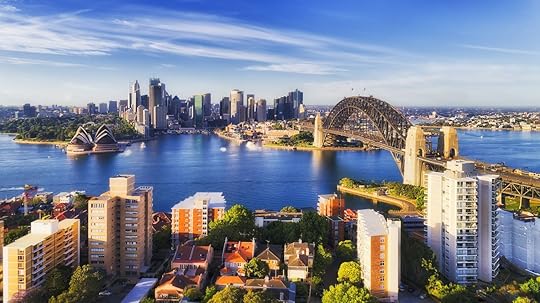
Sydney, Australia, has taken a big step toward its sustainability goals. Since the beginning of July, the central borough of the Sydney metro area, known as the City of Sydney, has run entirely on renewable energy. Nearly 250,000 residents now benefit from clean power for all daily operations, including buildings, street lights, and public spaces.
The city’s power is derived from local solar and wind farms in New South Wales, totaling the largest energy deal struck by a city council anywhere in Australia. According to the advocacy group Global Citizen, the move is expected to generate jobs in the nearby communities of Wagga Wagga, Nowra, and Inverell, where the solar and wind farms are located.
“We are in the middle of a climate emergency. If we are to reduce emissions and grow the green power sector, all levels of government must urgently transition to renewable energy,” said Sydney’s Lord Mayor Clover Moore in a press release. “Cities are responsible for 70 percent of greenhouse gas emissions worldwide, so it is critical that we take effective and evidence-based climate actions.”
Seventy per cent of the world’s emissions are generated from cities, so the action city governments take is absolutely critical. https://t.co/fatMzgPATd
— Clover Moore (@CloverMoore) July 7, 2020
Sydney has been certified as carbon neutral since 2011 and is on track to reduce its total emissions by 70 percent by 2030, Euronews reported. The city estimates that moving to renewable energy will save taxpayers 500,000 Australian dollars per year ($347,000) over the next decade, keeping 20,000 tons of CO2 emissions out of the air annually. 
More like thisSustainabilityWhen you fly, don’t just offset your CO2. Get rid of it.
The post The City of Sydney is now powered by 100 percent renewable energy appeared first on Matador Network.

July 7, 2020
Comet NEOWISE is visible in July
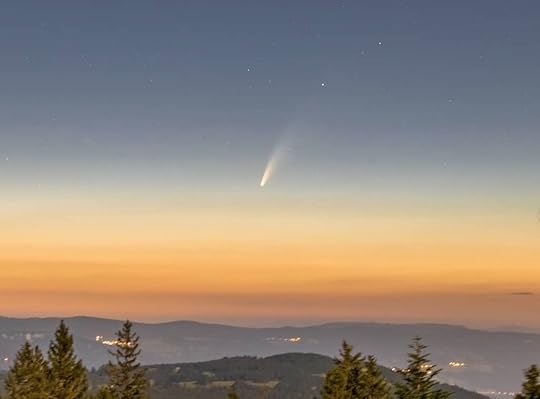
Usually celestial events are very precise and known years, if not decades, in advance. Not so with comet C/2020 F3, also known as NEOWISE. NEOWISE was discovered in late March and is considered a surprise as very few people expected its arrival. And unlike other celestial events, the comet is not a one-off — it will be visible at various times throughout July.
Many have been able to capture incredibly clear images of the comet throughout the world. Amateur landscape photographer Vasyl Yatsyna took a remarkable shot of NEOWISE in Switzerland before dawn today:

Photo: vasylyatsyna/Instagram
In Phoenix, Arizona, Chirag A. Patel went for a hike today at 4:00 AM before dawn to catch a glimpse of the comet and was able to capture this superb image:
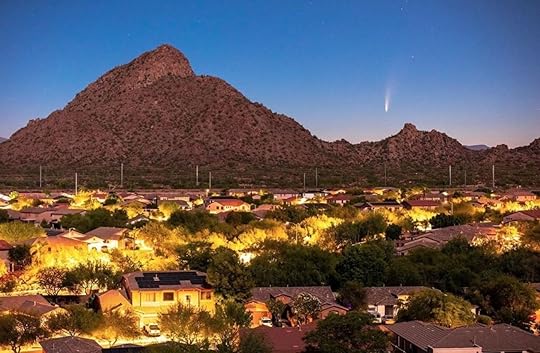
Photo: chirag5patel/Instagram
NASA explained that the comet is now coming closer to Earth but its brightness is still uncertain. Starting next week, scan the sky northeast with a pair of binoculars, or with the naked eye, in the early morning (around 3:30 AM), and above the northwest horizon just after sunset, to see if you can spot NEOWISE. 
More like thisAstronomy12 stargazing events you don’t want to miss in 2020
The post A surprise comet is streaking across the sky this month appeared first on Matador Network.

US withdrawing from WHO

After months of combative language and dissatisfaction directed at the World Health Organization, the Trump administration is formally withdrawing from the WHO.
Today, the administration notified Congress and the United Nations of the US’s withdrawal, which may not be a surprise, but it’s still certainly a devastating blow for a country in the midst of a pandemic.
Senator Robert Menendez, the top Democrat on the Senate Foreign Relations Committee, tweeted, “Congress received notification that POTUS officially withdrew the U.S. from the @WHO in the midst of a pandemic. To call Trump’s response to COVID chaotic & incoherent doesn’t do it justice. This won’t protect American lives or interests—it leaves Americans sick & America alone.”
Trump has insisted that the WHO helped enable the Chinese government’s cover-up of the pandemic and has repeatedly called for the organization to be defunded. His Republican allies, however, haven’t stood beside him, disagreeing with the decision to withdraw and urging him to reconsider. While some may be skeptical of the WHO, most seem to agree that withdrawing during a pandemic isn’t the best idea.
It’s important to note, however, that given the yearlong timeline for the withdrawal process, the November election could reverse this course of action should Trump be voted out of office. 
More like thisCulture GuidesPatriotism defines America, but what about the rest of the world?
The post Trump administration begins withdrawal from World Health Organization appeared first on Matador Network.

Jail time in Italy due to COVID-19
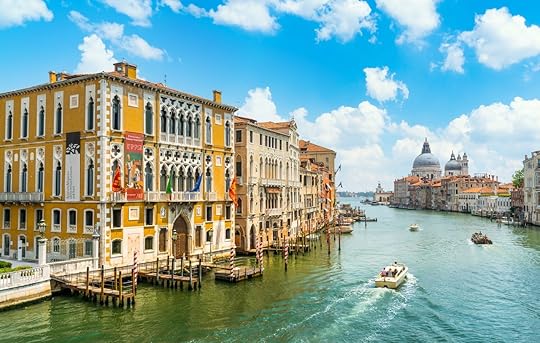
Having been one of the most-affected nations in the world with a total of 34,869 deaths and 241,819 COVID-19 infections, Italy has been through hell and back this spring. To encourage people to be as safe as possible when it comes to spreading the coronavirus, the Italian region of Veneto is imposing a prison sentence for people who tested positive but who deny hospital treatment. Hospitals are even required to inform the public prosecutor’s office of anyone refusing admission after testing positive.
Moreover, for any citizens returning to the region after a business trip from outside the European Union or a non-Schengen country, two swab tests are compulsory. If you test positive and refuse admission for treatment, you could be in big trouble. Italian law states that anyone who negligently spreads an epidemic could face a prison sentence of up to 12 years, reports Reuters.
Veneto’s governor Luca Zaia said via a Facebook-streamed news briefing, “It is a way to partially compensate the national law that does not require isolation upon return from a non-EU country if the stay abroad lasts up to five days.”
Employers are heavily relied upon to enforce this rule and hold employees accountable. If an employee does not take the two swabs, employers could face a fine of $1,100 multiplied by the number of company employees. 
More like thisTravelThese destinations are opening to US tourists this summer
The post In Italy, refusing COVID-19 treatment could land you in jail appeared first on Matador Network.

Disputed territories you can visit
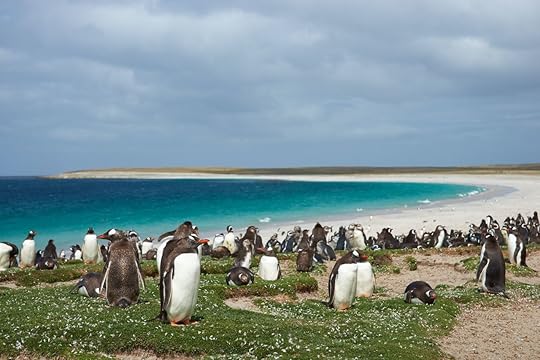
One can never go wrong with a trip to Paris or Bali, but seasoned travelers are often looking for bigger challenges than the well-known tourism destinations, and there’s no shortage of culturally and politically complex places that are also tricky to visit. Whether it’s the site of generational conflicts like the Gaza Strip or a more dormant territorial dispute like the Falkland Islands, areas of conflict often have a lot to offer, with more historical and cultural layers to peel back than your typical destination. Convincing your significant other to change your Cancún vacation to a trek in the Tibetan mountains might prove complicated, but it’s totally worth it. These disputed territories should be on your travel list, even if they’re tough to access.
1. Palestine
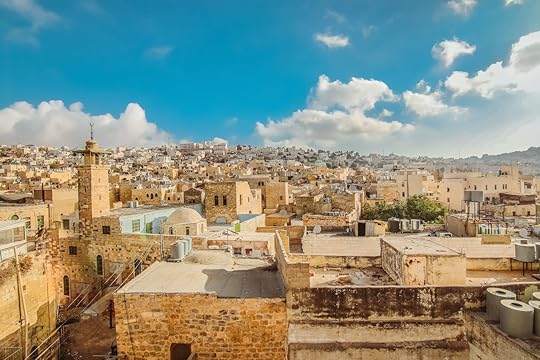
Photo: nayef hammouri/Shutterstock
For decades, Palestine has been one of the most contentious territories in the world. But while it isn’t your typical tourist destination, it’s not just a warzone or a region perpetually embroiled in religious strife — it’s also home to five million people. And contrary to popular belief, it’s actually safe to visit.
The 2,400-square-mile piece of land surrounded entirely by Israel has been a center of the Israeli-Palestinian conflict since the 1940s and the center of a generations-long dispute rooted in religious heritage. Palestine encompasses the Gaza Strip and the West Bank, but as Gaza is closed to tourism, the West Bank is really your only option for visiting Palestine. The West Bank is divided into three areas (A, B, and C) and administered by Israel and the Palestinian Authority. Since the end of the Second Intifada war in 2005, the West Bank has enjoyed a period of relative peace, making it safe for visitors.
Bethlehem is one of the cities in Palestine with the most accommodation options, making it the perfect base for your trip. There, you’ll find an abundance of classic Palestinian dishes like schwarma and falafel, as well as desserts like kanafeh — semolina dough soaked in syrup and layered with cheese. It might not be Portland, but there are also several microbreweries in the West Bank, including Taybeh Brewing Company in Ramallah.
You can get there from both Israel and Jordan, though in both cases you will have to pass through Israeli checkpoints. Gaining entry should be relatively easy — just make sure you have your passport and visa ready at all times.
2. Tibet
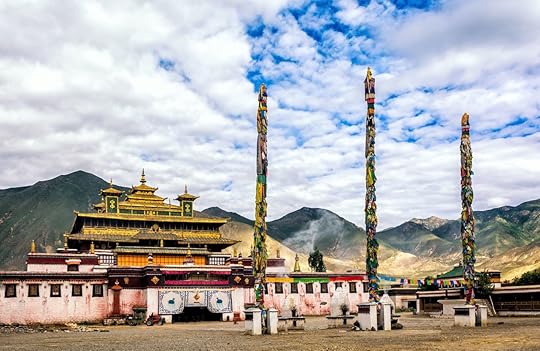
Photo: dt.Linh/Shutterstock
The ongoing territorial conflict between China and Tibet is known throughout the world, as is the difficulty of actually visiting the disputed territory. Tibet comprises almost a quarter of China’s total landmass and has been occupied by China since 1950. Although it is the traditional homeland of the Tibetan people, Tibet has been dominated by China for decades, and the area’s cultural identity has eroded over the years. The Tibetan people unsuccessfully attempted to rise against Chinese rule in 1959, resulting in the Dalai Lama (Tibet’s spiritual leader) maintaining a government in exile in India, from which he still has not returned. Tibet’s political and cultural relationship with China is complicated, but debate still swirls around the Tibetan independence movement and Chinese oppression.
As an international tourist, the only way to visit Tibet is through a guided tour with a registered Tibetan travel agency. You will also need Tibet and Chinese visas, neither of which should prove too difficult if you’re visiting with a legitimate tour agency, as it will guide you through the application process.
You might think that guided group trips suck the adventure out of a vacation, but in Tibet, pretty much everything feels like an adventure. Of course, there’s Mount Everest, the tallest mountain on Earth at 29,000 feet. But if your goal isn’t to spend weeks trekking to unfathomable altitudes, Tibet has an abundance of palaces, villages, monasteries, and natural beauty to keep you busy. Whether it’s visiting the birthplace of Tibetan Buddhism or going on the picturesque Kailash Mansarovar Yatra pilgrimage, Tibet is worth the extra work.
3. Abkhazia
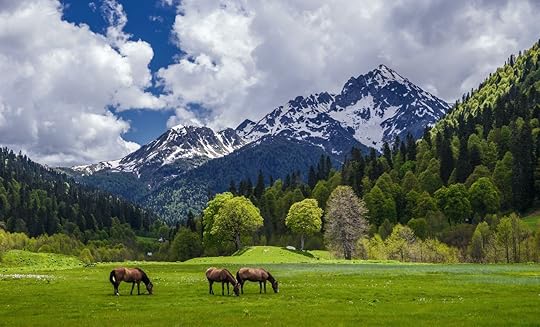
Photo: Egoreichenkov Evgenii/Shutterstock
For many travelers, a trip to Georgia alone would be original enough. The truly ambitious, however, should look northwest to the region of Abkhazia, located between Georgia and Russia on the Black Sea. Having been incorporated into Georgia by Russia in 1931, Abkhazia grabbed the opportunity to secede when Georgia declared its independence from the Soviet Union in 1991. But Georgia would not let go so easily and waged a violent war that ended with Abkhazia’s victory. Although separated from Georgia since 1993, Abkhazia only officially declared its independence in 1999. There is still much dispute over the region’s independence, as Georgia believes the territory is its, and only a small handful of countries actually recognize Abkhazia’s autonomy.
The tug-of-war over Abkhazia certainly shows in its cultural influences — the people of Abkhazia use Russian roubles but speak a distinct Abkhaz language. In the days of the Soviet Union, Abkhazia was a popular tourist destination, with beaches, mountains, forests, and fortresses to explore. The capital of Sukhumi has many abandoned buildings (some residents were forced to flee back to Georgia after Abkhazia declared its independence) and stunning Byzantine and Soviet-era architecture, which makes it one of the most unique capital cities you’ll ever see.
Getting a visa to Abkhazia isn’t as tough as you might think. You just have to apply on the official website and then pick up your visa at the Ministry of Foreign Affairs in Sukhumi upon your arrival. The easiest way to get there is by taking the train from the city of Zugdidi in Georgia. Before entering, expect to encounter a Russian checkpoint (even though the region isn’t technically Russian).
4. The Crimean Peninsula
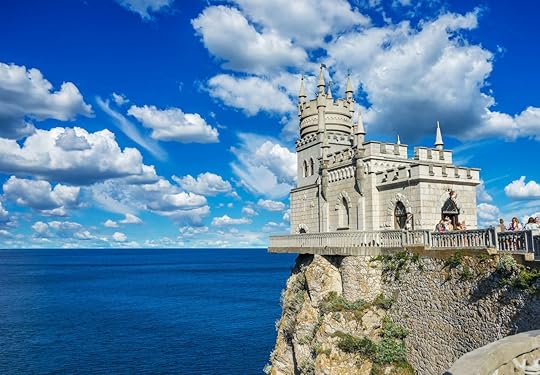
Photo: den781/Shutterstock
A Russian-controlled peninsula extending into the Black Sea, Crimea is both one of the most beautiful destinations in Eastern Europe and among the most contentious. Russia considers the Crimean Peninsula Russian territory since it was annexed from Ukraine in 2014, though Ukraine still claims it as its own, backed by the majority of international governments. Although Russia effectively controls and administers the area, the United Nations decries Russia’s aggression and supports Ukraine’s rights to the land. Now, the peninsula is the epicenter for Russian-Ukrainian tensions, occasionally boiling over into violence.
Since the Crimean Peninsula is under Russian control, visiting will require you to enter through Russia with a Russian visa. It’s important to note that given the territorial dispute, Ukraine considers accessing Crimea with a Russian visa a form of illegal entry to their territory, and could result in your arrest if you show any evidence of your trip while in Ukraine. Also note that since Crimea is a political no man’s land, consular services are largely unavailable, so access to an embassy should not be expected.
Although obtaining the necessary Russian documents isn’t exactly simple — especially for citizens of the United States — it’s worth it. There is a reason why Nicolas II, the last Russian tsar, and his family spent their summers on the peninsula. The beaches of Feodosia, sprawling vineyards, castles, and mountains make it a great vacation spot. History buffs will probably want to prioritize a trip to Livadia Palace in Yalta, summer home of the Russian emperors and where the famous conference took place in 1945 to determine the future of Europe following World War II.
5. Ceuta
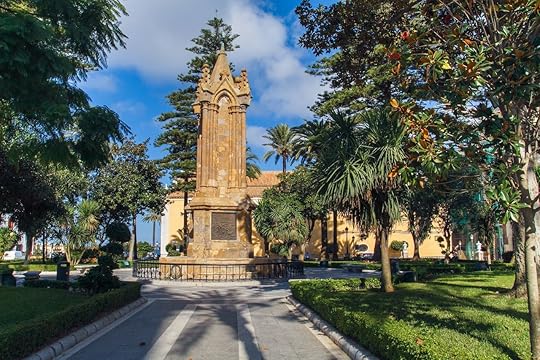
Photo: Edijs Volcjoks/Shutterstock
Ceuta is technically part of Spain, but it certainly doesn’t look like it. An autonomous Spanish enclave in North Africa, Ceuta is located directly across the Strait of Gibraltar in the northernmost part of Morocco. Spain and Morocco have long feuded over the territory, with Morocco claiming that Ceuta is a remnant of colonialism that should be relinquished, while Spain argues that since the area has been under Spanish control for 600 years, it has right to the land.
In spite of its geographic location, Ceuta bears a closer resemblance to Spain than Morocco. Ceuta’s cathedrals and monuments have a European aesthetic, and the euro is the currency. In the heart of the city, you can visit the cobblestone Plaza de Africa, home to a 19th-century palace, cathedral, and — in case you briefly forgot about the territorial struggle — a memorial to the soldiers lost in the Spanish-Moroccan war of 1860.
By land, Ceuta is only accessible via Morocco. You can take a bus to the Moroccan town of Fnideq, and then taxi to the border itself, and then walk a short distance to the city. You are required to fill out entry/exit forms at the border — as well as provide your passport — but these forms are readily available from border agents. Ceuta is also accessible by sea from Algeciras, Spain.
6. Liancourt Rocks
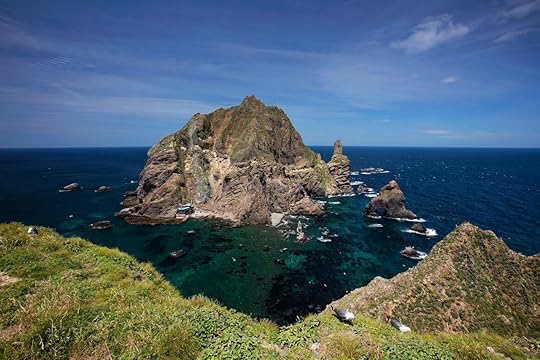
Photo: kcoon2377/Shutterstock
Unlike many other disputed territories, the Liancourt Rocks aren’t a particularly strategic piece of land, nor are they home to residents in the midst of a political tug-of-war. In fact, these islets in the Sea of Japan have just one permanent resident — an elderly fisherman who’s planning on leaving — and an acreage of under 50. Known as Dokdo to South Koreans and Takeshima to the Japanese, the Liancourt Rocks have been the center of a territorial dispute between South Korea and Japan for 300 years.
Although Japan supposedly recognized the islands as a Korean territory in 1696, Japan claimed Liancourt Rocks in 1905 when it occupied South Korea. After WWII, when Japan left Korea, the islands were reportedly restored to the peninsula. Both nations have been claiming the islands since then, with Korea establishing a military base on the east island.
Reaching the island will require you to take two three-hour boat rides from the South Korean peninsula. You shouldn’t have any trouble gaining entry to Liancourt Rocks, though it’s mostly Korean citizens visiting these days, staking their claim to the area.
Once on the islets, you have 30 minutes to explore restricted parts of the east island.
7. Falkland Islands

Photo: JeremyRichards/Shutterstock
The Falkland Islands are a self-governing British Overseas Territory in the South Atlantic Ocean, whose residents control the island’s future and politics. However, the islands are still the center of a contentious dispute between the United Kingdom and Argentina, which fought a war over the small territory in 1982. Despite Argentina’s surrender to the British on June 14, 1982, the nation still claims ownership of the islands.
The islands are relatively remote, but they’re accessible via flight from the UK, South America, or by taking a cruise ship. The UK flight departs from RAF Brize Norton airport, flies directly to the islands, and must be booked directly through the Falkland Islands Government Office. From South America, you can fly from Santiago de Chile airport. If you prefer to visit via cruise, ships regularly visit the islands between October and March, often traveling between Brazil and Argentina.
In Stanley, the capital of the Falkland Islands, you can visit the Historic Dockyard Museum. The museum houses relics from the islands’ maritime past, exhibits from the 1982 war, and artifacts from fishermen who once lived there. The islands are probably best known, however, for their abundance of wildlife, particularly penguins. There are five different penguin species on the island, and the animals greatly outnumber people. 
More like thisSustainabilityThe 7 most inhospitable climates people actually live in
The post 7 disputed territories that only tenacious travelers can visit appeared first on Matador Network.

What is the Ultimate World Triathlon
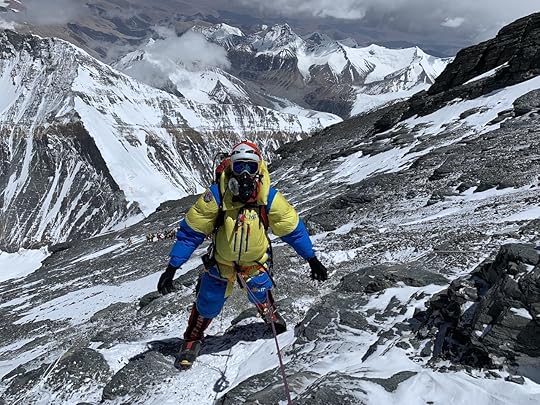
After summiting Mount Everest in April of last year, Rob Lea still had two legs of his Ultimate World Triathlon to go: swimming the English Channel and cycling across the United States. With just a month between Everest and the Channel, Lea got ready. By eating. A lot.
“All I did was eat as much as possible,” says Lea. “I had a ton of beer and a pizza sponsor. The local pizza company here was just giving me as much pizza as I wanted…I was eating pizza in bed right before I went to sleep, and just getting as many carbs as I could. I wasn’t eating whenever I was hungry. I was eating whenever I wasn’t full.”
Lea, an Ironman veteran and former half-marathon world champion, was out to accomplish not just what no individual he knows of had achieved before — conquer the world’s highest peak, navigate its most famously treacherous waterway, and ride a bike across a continent — but to do it all within six months.

Photo: Rob Lea
The six-month window meant he had no time to spare. Lea had lost 20 pounds during the Everest climb. While on the world’s tallest mountain, a fellow climber who had swum the English Channel had said to Lea, “You know how to swim, but you’re not going to survive it if you don’t put weight on.’”
Lea already knew this. Although he’d been a multi-state swimming champ in high school and an All-American at UC Davis, a Division II university, for Lea the biggest challenge of open-water swimming was the cold. In open-water swimming, the only protection from the cold is yourself.
“You can’t wear a wetsuit,” says Lea, explaining that since the first swimmer crossed the Channel in 1875 in a pre-wetsuit era, neoprene is not considered a legitimate part of open-water swims. “I’m a pretty good swimmer, but to me the biggest crux was the cold temperature. It took a lot for me, literally years of training, to be able to withstand the temperatures.”
Many months before swimming the Channel, Lea put a large metal tub in his backyard. “In the winter I fill it up. It ices overnight, I take an axe out, chop up the ice, and sit in that. And I would do that like five days a week. I would sit in that from anywhere from five minutes to fifteen minutes, in this ice bath,” says Lea.

Photo: Rob Lea
Beyond the mental training, Lea was working to build up brown fat, the insulating baby fat we’re all born with, which he needed more of. He also swam in Utah lakes and even in the San Francisco Bay, where the whitecaps and rough current make it “one of the best places you can train for the English Channel,” according to Lea.
Lea says he normally carries about 170 pounds on his 6’1” frame. He’d intentionally gained weight before the Everest climb, but had lost most of it during his weeks in the Himalayas.
“When I came back from Everest I was like 175, I think, and that was after losing 20 pounds. So I went into Everest at like 195. And then when I did the English Channel, I was about 205 pounds, or maybe even a little bit heavier than that,” says Lea. Not only did he eat as much as possible, feeling “bloated all the time,” Lea says he also tried not to work out too much, so he wouldn’t burn the fat he needed to build up.
Preparing for Everest had taken a different kind of discipline. If preparation for the Channel swim involved stuffing in as many calories as he could, getting ready for Everest had meant depriving himself of oxygen wherever possible.
Lea had already bagged some big mountains, among them North America’s highest peak, Denali. Seven months before Everest, he’d also climbed the world’s sixth-highest peak with his girlfriend, mountaineer and environmental advocate Caroline Gleich. At the top of 26,864-foot Mount Cho Oyu, Gleich had also dropped to one knee and proposed. Lea had naturally said yes, so he’d be fitting in a wedding in between the last two legs of his Ultimate World Triathlon as well.
Although they already lived 7,000 feet above sea level in Park City, Lea and Gleich would need to adapt to even higher altitudes if they wanted to summit Everest within their constrained time frame. After his morning ice baths, Lea rode his bike indoors throughout the winter while wearing a Hypoxico mask, which mirrors 19,000-foot oxygen levels. Lea and Gleich also slept with a tent over their bed that simulates sleeping at 17,000 feet.
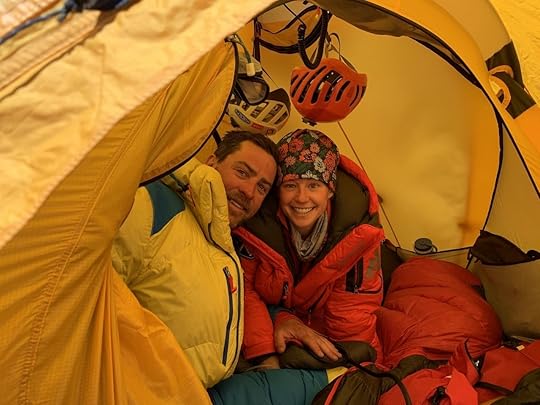
Photo: Rob Lea
In the end, that meant they could cut off the time it would take to acclimatize at base camp from two-plus months to just 40 days — although Gleich almost didn’t make the trip when she tore her ACL backcountry skiing six weeks before they were set to travel. Gleich worked hard on strengthening to get a doctor’s green light to accompany Lea.
In April, they arrived in Tibet, where the pair would approach Everest from its less-traveled, and more challenging, northern route. A few weeks later, on May 23, climbers on both sides of the mountain rushed to summit ahead of a storm the next day. That was the fateful day memorialized in a startling New York Times photo of a dangerous ridge packed with hundreds of climbers, three of whom died.
While the north side wasn’t as crowded, several people were still planning to ascend. Lea and Gleich opted to hold off, deciding that they were in good enough shape to try the next day, when they would have to get to the summit and back before the storm hit.
“We actually just spent an extra day at Camp 2, which is 25,000 feet on our side, and watched everyone go up without us. That was really hard to literally stare at the inside of our tents and watch everyone else go summit. But it was probably the best decision we made,” says Lea.
When they did head up on May 24, they had to maneuver past a day-old cadaver. “The body was kind of hanging, and we had to basically scoot by it, you’re kind of rubbing up against the guy. That was kind of like reality. This could happen to any one of us at any time,” says Lea.
But when they did get to the top of the world, they had it to themselves. Part one of the world triathlon was nearly done, and it was time to start eating.

Photo: Rob Lea
After his 30-day beer-and-pizza binge, Lea flew to England in early June. He arrived feeling under the weather and slept poorly, but Channel swims are heavily dependent on the Atlantic’s massive tidal changes and its equally volatile weather. When the boat captain rang him up the next morning, he told him that was his window. So Lea went the same day, setting off at 4:00 PM.
Although he felt unwell, one thing Lea hadn’t been worrying about was jellyfish. He had thought a sting or two would break up the monotony of a 12-hour swim. He was in for a shock, or rather, several.
“I thought a little jellyfish sting would be a kind of wake-me-up, a little adrenaline shot, so I was almost looking forward to it. But I had no idea that I was going to get stung that much,” says Lea.
“After the first 50 stings I was thinking to myself, ‘If this keeps up for the next ten hours, can I mentally take that? Can I physically take it? Is it going to give some sort of toxicity in my body from getting stung?’”
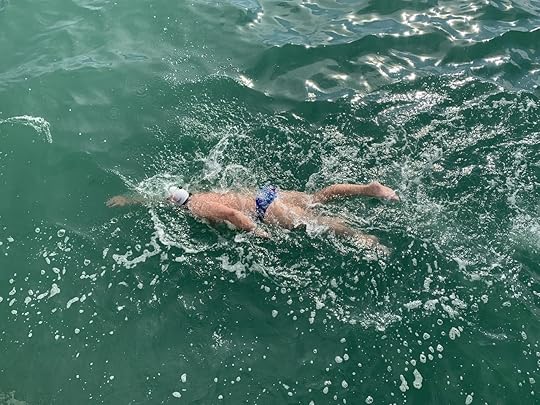
Photo: Rob Lea
But Lea powered through the night, getting zapped well over a hundred times. “I was expecting to swim longer, and I basically didn’t know I was there until I hit sand.” He’d made it in under 12 hours. And then it was on to leg three.
First, however, Lea had to get married. On August 10, he and Gleich tied the knot at the top of the tram at Hidden Peak at Utah’s Snowbird resort, at 11,000 feet. This time, they took the tram.
While marrying Gleich did add to the tasks at hand, Lea credits Gleich with helping him set an ambitious goal in the first place.
“I’ve been an athlete my whole life but I don’t think without her influence I would have picked this massive goal to do, this kind of first-ever thing,” says Lea.
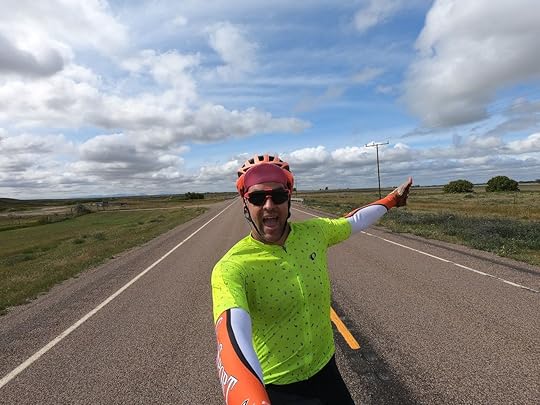
Photo: Rob Lea
Less than three weeks later, Lea started his ride. He was surprised by how tough it was.
Lea had opted for a northern route from Anacortes, WA, to Vermont that would take him through the Cascades range and Glacier National Park. “Part of the reason I wanted to do that was because I live in the mountains, and I knew it would be more climbing to go through that area,” said Lea.
But with Mount Everest, the English Channel, and a wedding, Lea had only ridden a half-dozen times in the previous six months. Lea had intended to ride himself into shape because he’d done that before.
“One thing I didn’t think about was that to be able to ride yourself into shape, you have to have recovery days, and I didn’t have those recovery days,” says Lea, who averaged about 100 miles a day and even rode a couple of 130 mile days. “My body was in a world of hurt. My legs were just completely shot and I was having a tough go at it.”
Lea managed with support from Gleich and his mom, who met him at the end of each day. They brought food to the hotel so Lea could just shower, eat, and have some company after six, eight, or ten hours on a bike.
“It’s lonely out there when you’re riding your bike…so it was nice to have someone to chat with at the end of the day.”
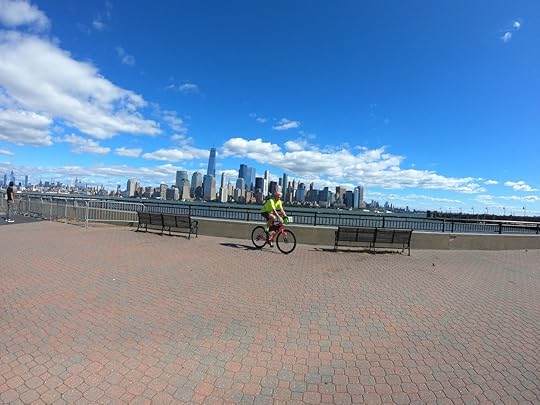
Photo: Rob Lea
Lea hit New York City in October, rode up Sixth Avenue, and kept on riding to Massachusetts, where he took a ferry across to Nantucket, arriving at his destination 3,600 miles later.
“When I look back, I wasn’t as prepared as I wanted to be when I started the swim, because I had Everest right before. Same thing goes for the bike,” he says. But for Lea, it was never about being easy.
“That’s kind of what made it so hard, and so special for me, to be able to complete it. There’s different ways I could’ve done it, but in the end I think what made it so special for me was how much of a struggle it was.” 
More like thisOutdoorScientists have found the limit of human endurance
The post How Rob Lea invented and crushed the Ultimate World Triathlon appeared first on Matador Network.

NASA to land first woman on the moon

NASA’s Artemis program, which will further explore the moon, is in full swing, and part of the plan is to land the first woman on the moon by 2024.
The last person to walk on the moon did so in 1972, and no woman has ever set foot on the lunar surface. With an infusion of $1.6 billion from the Trump administration, NASA has launched the Artemis program, appropriately named after Apollo’s twin sister and Greek goddess of the moon.
NASA Administrator Jim Bridenstine said in a press call, “Fifty years after Apollo, the Artemis program will carry the next man and first woman to the moon. To land American astronauts on the Moon by 2024, we are working through the acquisition approach for the various projects.”
NASA’s goal is to explore more of the moon, including its south pole, and eventually establish a strategic presence in space. According to its website, “We will collaborate with our commercial and international partners and establish sustainable exploration by the end of the decade. Then, we will use what we learn on and around the Moon to take the next giant leap — sending astronauts to Mars.” 
More like thisAstronomy12 stargazing events you don’t want to miss in 2020
The post NASA aims to land first woman on the moon by 2024 appeared first on Matador Network.

Matador Network's Blog
- Matador Network's profile
- 6 followers



